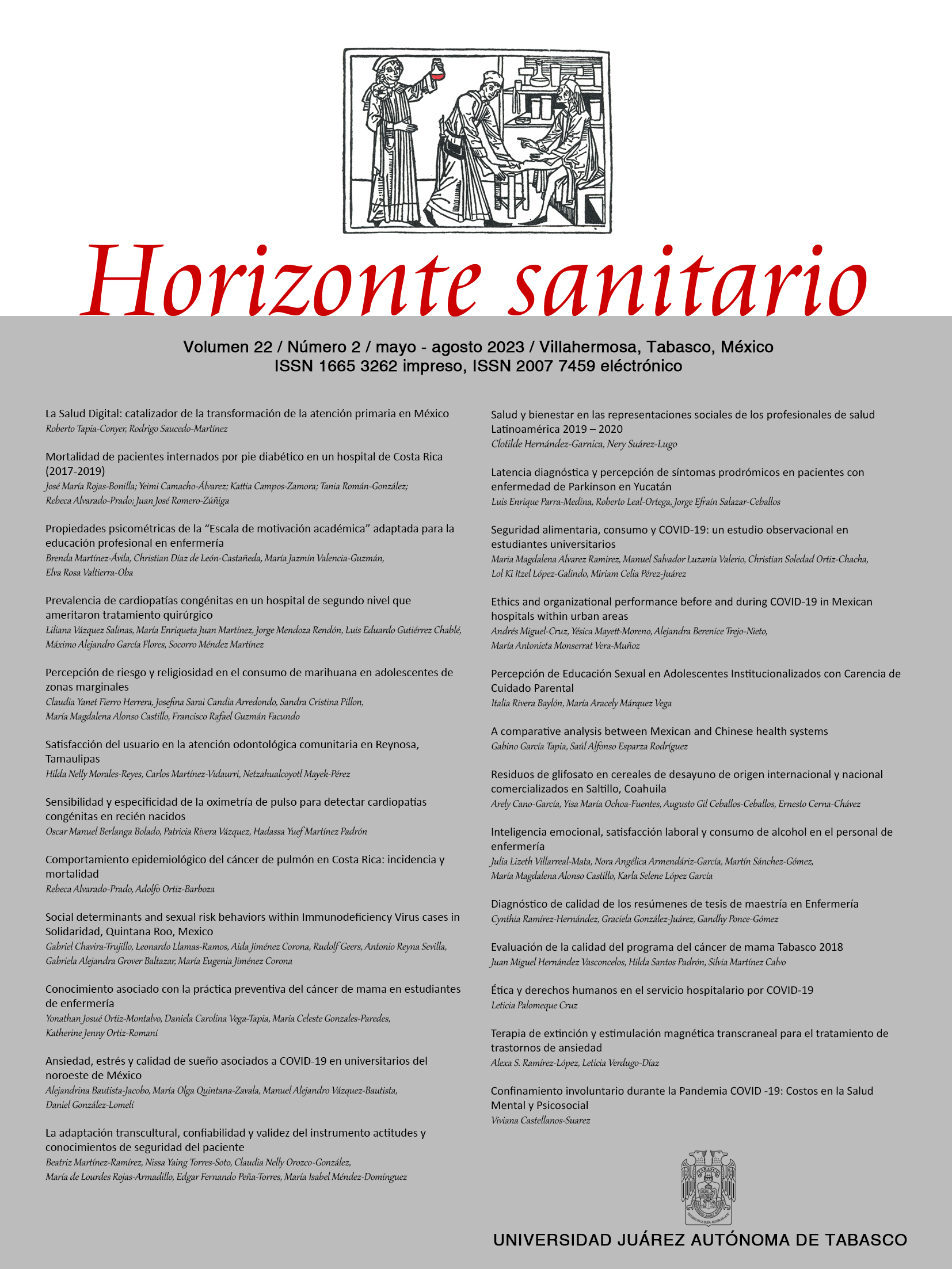Epidemiology of lung cancer in Costa Rica: incidence and mortality
DOI:
https://doi.org/10.19136/hs.a22n2.5207Abstract
Objective: Describe the epidemiological behavior of lung cancer in Costa Rica, specifically the 1999-2016 incidence and 2004-2019 mortality for decision-making based on scientific evidence.
Material and methods: The study is of a descriptive, analytical and spatial type with a cross-sectional quantitative approach, which presents the incidence and mortality -crude and adjusted by sex- according to the information sources of the National Institute of Statistics and Censuses (INEC). and the Ministry of Health. In addition, it presents a simple and multivariate Poisson regression analysis to explore sociodemographic variables associated with mortality according to cantonal unit of analysis.
Results: At the country level, the incidence of lung cancer shows a decrease since 2000, both in women and men. Of the cases of lung cancer in Costa Rica, the main topography is Malignant neoplasm of the bronchi or lung, part unspecified (C34.9) and the most frequent morphology is 8000. The most affected population is over 70 years of age both for women and men. Regarding mortality from lung cancer, from 1994 to 2019 it shows a constant growth in rates. The most affected population corresponds to men and people between 60 and 80 years old.
Conclusion: The work of the National Tumor Registry and the INEC regarding the surveillance of malignant tumors in Costa Rica, which is one of the most consolidated platforms in the region, is recognized. However, it is considered crucial to assess other variables of clinical interest for decision-making and to improve the approach to pathologies such as lung cancer.
Keywords: Lung cancer; Epidemiology; Mortality
Downloads
Downloads
Published
Issue
Section
License
Copyright (c) 2022 Horizonte Sanitario

This work is licensed under a Creative Commons Attribution-NonCommercial-ShareAlike 4.0 International License.





























